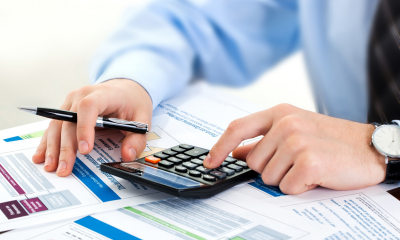
Details of the VAT you charge customers and pay HM Revenue & Customs (HMRC) are provided using the VAT return. UK VAT-registered businesses must complete VAT returns and pay any VAT due to HMRC
VAT return basics
The VAT return summarises your sales and purchases and the VAT relating to them. All the information you need should be in your VAT records.
The VAT return includes your sales total (excluding VAT) and output tax - the VAT you charged on these sales and which needs to be paid to HMRC. This also includes VAT due on any other taxable transactions, for example, if you barter goods or take them for personal use.
The VAT return also includes details of your total purchases (excluding VAT) and input tax -the VAT you have paid and can reclaim. If you make any sales that are exempt from VAT, you will not usually be able to reclaim all the VAT you have paid. Other purchases where you cannot usually reclaim VAT include most car purchases. You can't reclaim VAT if you do not have a VAT invoice to prove you paid it.
All VAT-registered businesses must comply with HMRC "Making Tax Digital" requirements. VAT returns must be submitted online. You must register with HMRC VAT online and must be submitted using MTD-compatible software or HMRC's own tools - unless your accountant files your VAT return for you.
All UK small businesses have an online personal tax account once registered with HMRC. You can view your tax transactions across the range of business taxes including Self Assessment, Corporation Tax, VAT and PAYE for employers and to make payments at any time.
Tax points, VAT periods and VAT returns
UK VAT-registered businesses complete a VAT return for each VAT period. VAT periods are typically quarterly, though you can ask for a non-standard VAT period. For example, a business that regularly reclaims VAT from HM Revenue & Customs might boost its cash flow by completing monthly VAT returns. UK businesses can also ask for quarterly VAT periods that match their financial years. Smaller businesses can simplify their VAT accounting by opting for the annual accounting scheme.
Your VAT return summarises all the transactions that took place during that VAT period. For VAT purposes, the transaction date is determined by the 'tax point'. The tax point is normally, but not always, the date on the VAT invoice. However, if:
- there is no VAT invoice (eg with typical retail sales), the tax point is normally the date of supply
- payment is made in advance, the tax point is the earlier of the date of payment and the invoice date
- the VAT invoice is issued more than 14 days after the date of supply, the tax point is the date of supply
There are special tax point rules for situations such as part payments, in some industries and for some VAT accounting schemes. You may want to take advice to ensure you understand what tax point to put on VAT invoices you issue and what to include in your VAT return.
Online VAT returns are due one month and seven days after the end of the VAT period. Payment of any VAT owed is due at the same time, although HMRC will collect direct debit payments three days later.You can work out your VAT payment deadline using the GOV.UK calculator.
Different deadlines apply to the annual accounting scheme and for larger businesses which must make payments on account.


